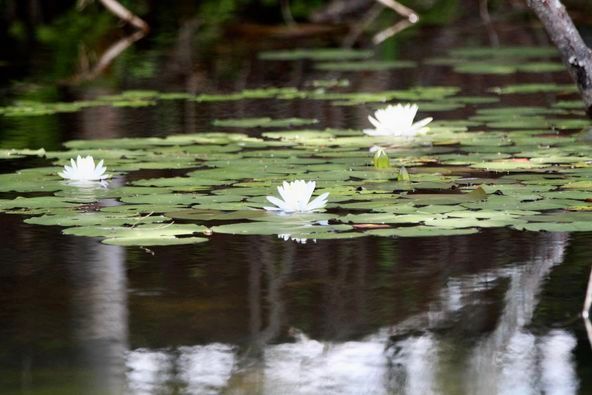



Aquatic Invasive Species (AIS) Activities

The Forest Lake Association (FLA) would like to provide you with an update on our EWM mitigation efforts. As you likely know, lakes across the country are wrestling with various invasive species and Forest Lake is no different. Eurasian Watermilfoil (https://www.invasivespeciesinfo.gov/aquatic/plants/eurasian-watermilfoil) which is found here in Forest Lake, forms thick mats in shallow areas of a lake, quickly growing and spreading to block sunlight, killing off native aquatic plants that fish and other underwater species rely on for food and shelter. Since initially identifying milfoil in 2001 the FLA has been focused on mitigating the impact of this invasive species to maintain and improve the quality of life for lake residents. Below you will find a summary and details of the FLA's efforts to date (2025).
Executive Summary — Highlights
Herbicide treatment (applied June 12):
Immediate results: Treated areas now show no visible milfoil; native plants largely unaffected.
Cost: $26,500 funded entirely by the Foundation.
Full effectiveness will be confirmed through Onterra surveys in Spring and Fall of 2026
Manual removal (DASH & HH):
Aquatic Plant Management, Inc. (APM) using Diver Assisted Suction Harvesting (DASH) boat and Hand Harvesting (HH). Significant reduction in milfoil where this work has been done.
Original plan: 7.5 DASH days & 5 HH days ($32,000, Foundation-funded).
Field conditions: Underwater density found higher than survey estimates.
Additional effort approved:
APM recommends 1.5 more DASH days and 7 more HH days. Additional $19,500 approved: $6,000 from the Association, remainder from Foundation. APM only bills for work needed—no unnecessary expenditure.
Survey & Analysis:
Onterra’s surveys & planning: ~$15,000
Total 2025 Program Cost:
Likely to exceed $95,000 (~$1,200 per lake property owner).
Deeper Discussion:
1. Herbicide Treatment: Results & Outlook
On June 12th, a carefully planned and Foundation-funded herbicide treatment was implemented in the lake’s most infested zones. Initial field assessment indicates a complete die-off of milfoil in these areas, with native aquatic flora largely unaffected. However, as is common with aquatic invasive management, the full effectiveness of this chemical intervention will not be confirmed until professional follow-up surveys are conducted by Onterra next spring and fall. These surveys are essential to determine if milfoil regrows and to verify if native plant systems remain healthy and resilient.
2. Manual Efforts: DASH & Hand Harvesting:
In areas not suitable for herbicide, diver-based manual removal is being conducted by APM. These methods—Diver Assisted Suction Harvesting (DASH) and Hand Harvesting (HH)—rely on divers and snorkelers providing highly accurate assessments and removal of milfoil.
Original Plan:
Approved for 7.5 DASH days and 5 HH days, covering the 11 most affected sites for a cost of $32,000 (fully funded by the Foundation).
In-The-Water Reality:
A critical finding is that surface-based surveys (even with underwater cameras), like Onterra’s, can sometimes underestimate real milfoil density. As always in aquatic management, “the true extent is best determined with your face in the water.” Diver teams identified denser patches than expected, a common challenge with this adaptable invasive species.
Progress by July 10:
Roughly 66% of DASH and 70% of HH allocations had been utilized, cleaning up the 4 highest-density sites. Results: Strong reduction in milfoil numbers and density wherever work is complete.
3. Budget Adjustment: More Work Needed:
Recognizing that the remaining sites also need effective treatment, APM requested 1.5 additional days for DASH and 7 more days for HH. The Association responded quickly, approving the work and requesting an additional $13.500 from the Foundation, with the Association also funding $6,000. All areas that Onterra identified as needed milfoil removal will be worked on. The total cost for DASH and HH is over $52,000. Importantly, APM will only work as needed, billing strictly for days actually worked and reporting back promptly if yet more work proves necessary.
4. Oversight & Survey Costs:
To ensure precise targeting, measure success, and plan ahead, Onterra’s monitoring and management services (including multiple surveys and data analysis) are set at about $15,000 for the year.
5. Financial Impact:
The total projected cost for 2025 milfoil management is now over $95,000, translating to roughly $1,200 per property owner. This significant investment underscores both the scale of the milfoil threat and the strong financial support from the Foundation and Association membership.
6. Next Steps & Gratitude:
The next detailed report will be presented after Onterra performs our Fall survey and reports back to us. Typically, we do not receive that report until late October or November. The Association and the Foundation extends sincere thanks to all supporters for their commitment to restoring the lake’s ecological health.